For mountain bikers seeking both performance and comfort, the question of vibration absorption looms large. Many cyclists have heard claims about carbon fiber's ability to "soak up" trail vibrations, but how much of this is marketing hype versus scientific reality? Examining frames like the Trifox SDY21 Lightweight Carbon MTB Hardtail Frame reveals a complex interplay of materials science that impacts ride quality, whether building a modern 29 in mountain bike frame or a minimalist single speed bike frame.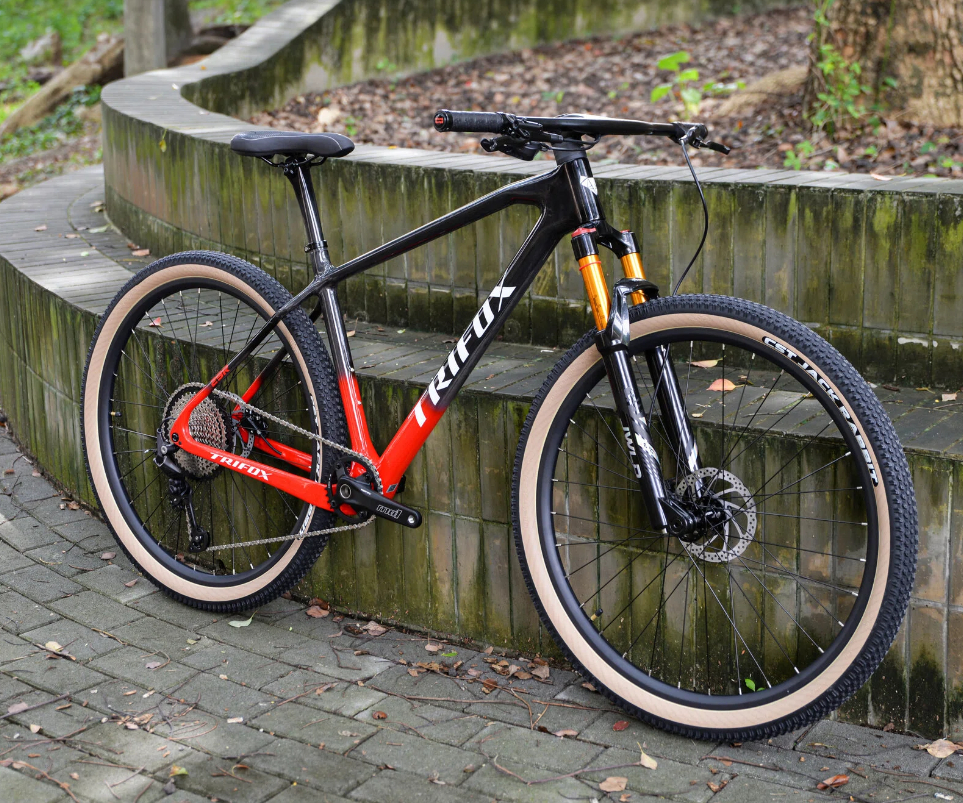
The Material Science: Why Carbon Fiber Behaves Differently
Carbon fiber's vibration-damping capability stems from its composite nature. Unlike homogeneous materials like aluminum, carbon fiber consists of microscopic filaments in a resin matrix, creating interfaces where vibrational energy dissipates. When vibrations travel through the carbon frame, they navigate complex interfaces, with each boundary absorbing energy—creating measurable damping that riders perceive as improved mountain bike comfort, whether on a geared bike or single speed bike frame.
Structural Damping vs. Material Damping
Crucial to distinguish between structural damping (from frame design) and material damping (from inherent properties). Carbon fiber excels at material damping due to its composite nature. The SDY21 harnesses this through careful carbon layup, optimizing both stiffness for power transfer and compliance for vibration absorption. This approach creates a hardtail frame that feels stiff during pedaling but forgiving on trail imperfections, beneficial for both 29 in mountain bike frame and single-speed configurations.
Frequency Matters: Which Vibrations Get Absorbed
Carbon fiber doesn't dampen all frequencies equally. Higher frequency vibrations from trail chatter are most effectively absorbed—precisely what causes hand numbness and muscle fatigue. The SDY21 addresses this spectrum through balanced design: carbon construction handles high-frequency damping while geometry manages larger impacts. This explains less fatigue on carbon hardtails, particularly important for 29 in mountain bike frame setups where wheel dynamics interact differently with trail vibrations, affecting overall ride quality.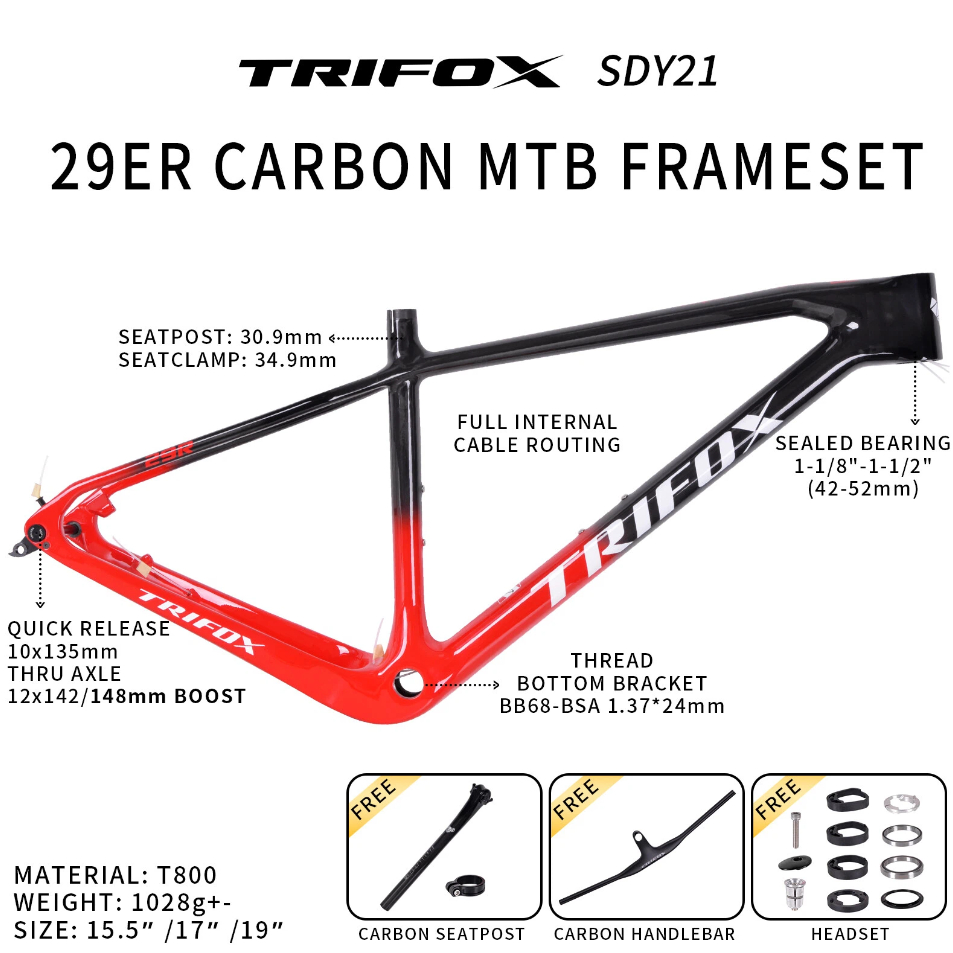
The Layup Process: Engineering Vibration Pathways
How carbon fiber is laid up significantly impacts vibrational characteristics. The SDY21 employs a sophisticated combination: high-stress areas use unidirectional fibers for optimal power transfer—critical for both racing bikes and single speed bike frame builds. Comfort-focused areas incorporate woven fabrics that enhance vibration damping technology without compromising structure. This intelligent carbon layup science delivers both efficiency and comfort in modern mountain bike frame design.
Real-World Implications: Less Fatigue, More Control
Practical benefits appear during extended trail sessions. Reduced vibration transmission means less hand and arm fatigue, allowing better control—particularly valuable on hardtails and crucial in a single speed bike frame where riders cannot shift to easier gears when fatigued. This trail vibration reduction also improves traction; by filtering vibrations, carbon frames maintain more consistent tire contact, especially valuable in loose conditions and beneficial for 29 in mountain bike frame configurations where larger wheels benefit from stable tracking.
Comparing Materials: Carbon's Advantage
Aluminum transmits vibrations efficiently with minimal damping, explaining why aluminum hardtails feel "harsh"—especially noticeable in minimalist single speed bike frame builds. Carbon fiber occupies a unique middle ground: stiffer than aluminum in specific directions while providing better carbon fiber vibration damping through its composite nature. This advantage proves particularly evident in modern 29 in mountain bike frame designs where carbon helps mitigate sometimes-harsher feedback from larger wheels.
Conclusion: Science Confirms the Ride Experience
Whether carbon fiber really absorbs vibrations finds answer in both laboratory measurements and rider experiences. The material's composite structure converts vibrational energy through microscopic interfaces—scientifically valid and perceptually significant across configurations. Frames like the Trifox SDY21 demonstrate how carbon engineering balances stiffness, weight, and durability while delivering tangible benefits: less fatigue, better control, and more enjoyable trail time—whether building a versatile 29 in mountain bike frame or a simplified single speed bike frame for uncomplicated riding pleasure.
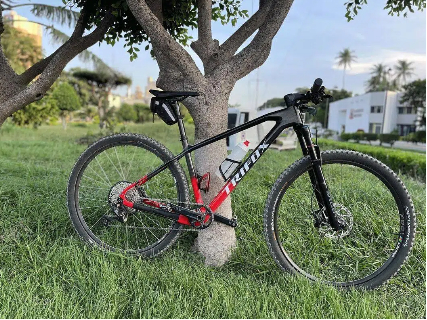
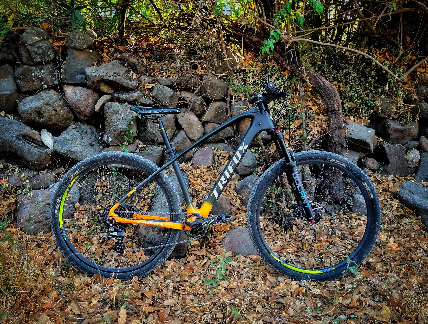
Building a mountain bike from the frame up is one of the most rewarding experiences for any cycling enthusiast. The process allows complete customization and creates a machine that perfectly matches your riding style, local trails, and component preferences. The TRIFOX MFM200 Carbon MTB Hardtail Frame serves as an exceptional foundation for such a project, offering not only modern geometry and lightweight carbon construction but also remarkable versatility in wheel compatibility.
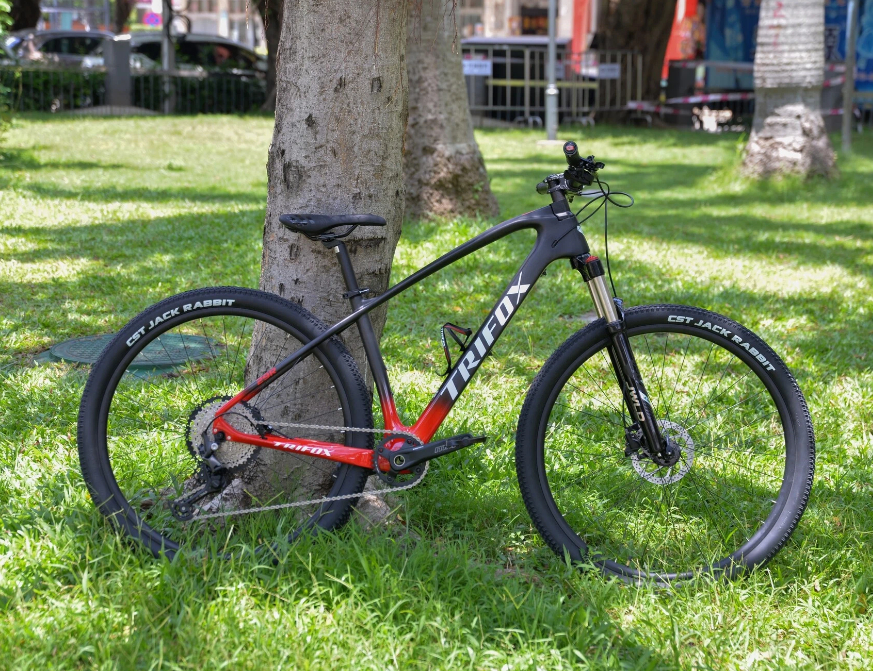
Choosing the Right Size: From 17 to 19 Inch Frame Options
The MFM200 is thoughtfully designed to accommodate riders of various heights, with popular 17 inch bike frame and 19 inch bike frame options. For many enthusiasts, the medium bike frame represents an optimal balance, making it a competent trail bike frame foundation for everything from fast cross-country to technical terrain.
Versatile Wheel Compatibility: Convertible Dropout System
A standout feature of the MFM200 is its innovative dropout system. The frame natively uses a robust 142mm thru-axle configuration for optimal stiffness and alignment. Crucially, by replacing the thru-axle dropout with an optional quick-release dropout, the frame seamlessly converts to a 135mm quick-release system. This convertible dropout design offers unparalleled flexibility, allowing you to choose between modern performance or legacy component compatibility for your trail bike build.
Frame Characteristics: Modern Performance Meets Timeless Design
While engineered with contemporary performance in mind, the MFM200 retains a clean, purposeful aesthetic that many consider a classic bike frame silhouette. Its full carbon construction delivers high stiffness-to-weight ratio and vibration damping. Internal cable routing contributes to a sleek appearance and protects components, making it a compelling centerpiece for a custom mtb.
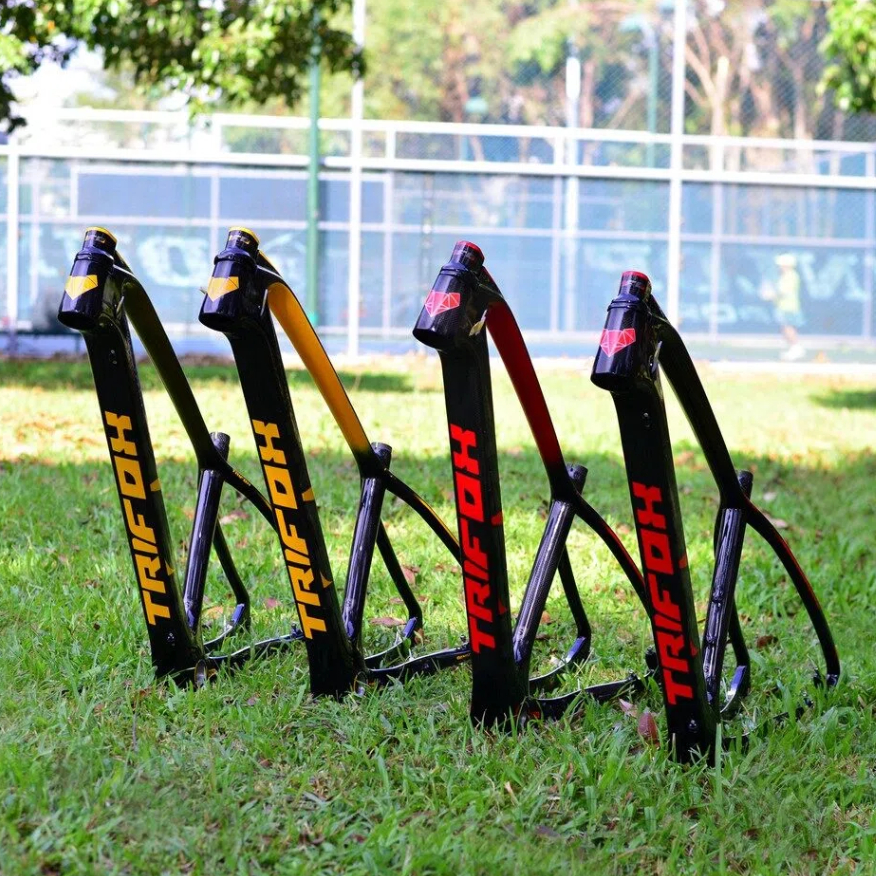
Building the Foundation: Drivetrain and Brakes
The frame is ideally suited for modern 1x drivetrains and features flat-mount disc brake tabs for clean integration with high-performance hydraulic systems. This modern braking standard offers consistent, powerful modulation in all conditions, a critical safety and performance upgrade for your mountain bike build.
Suspension Fork Selection & Cockpit Personalization
As a hardtail, selecting the right fork (120-150mm travel) is key to unlocking the frame's potential. Ensure it has a tapered steerer tube for optimal stiffness. The contact points—handlebar, stem, and saddle—are where the bike becomes uniquely yours. Strongly consider a dropper seatpost, which the frame's internal routing supports, for a major boost in descending confidence and control.
Conclusion: Your Vision, Realized
Building a bike around the TRIFOX MFM200 is an exercise in creation. From selecting the perfect frame size to utilizing its unique convertible dropout feature, every decision shapes a machine that reflects your priorities. Whether your goal is an XC racer or a trail explorer, the MFM200 provides a versatile, high-performance carbon foundation for your perfect thru-axle frame that can also adapt to quick-release compatible wheels.
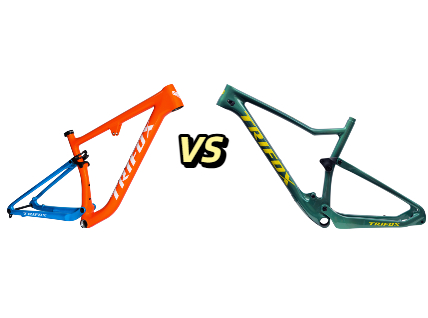
Selecting the perfect full-suspension carbon frame involves balancing multiple technical factors that directly impact your riding experience. Trifox offers two exceptional but distinct options: the Trail II Pro and the MFM100. Both utilize high-modulus carbon fiber and modern engineering, yet differ significantly in their approach to geometry, suspension design, and component compatibility. Understanding these differences will help you choose the frame that best matches your riding style and trail requirements.
Geometry & Riding Position: XC Efficiency vs Trail Confidence
The MFM100 is engineered for cross-country performance. Its geometry features a steeper head tube angle (around 68–69°) and a shorter reach, creating an upright, efficient pedaling position ideal for climbing and accelerating on undulating terrain. This is a classic XC mountain bike frame philosophy—prioritizing speed and efficiency over sheer stability.
Conversely, the Trail II Pro embraces modern trail bike geometry. With a slacker head tube angle (approximately 67–68°) and a longer front center, it positions the rider lower and further between the wheels. This "in-the-bike" stance inspires confidence on steep descents and provides superior stability at high speeds, making it the clear choice for technical, aggressive trail riding.
Suspension Design & Installation: A Key Differentiator
Here lies a major technical distinction. While both frames use a sophisticated four-bar linkage system, their suspension design and shock installation differ to serve their intended purposes.
The Trail II Pro typically employs a more traditional shock mount placement, with the shock oriented vertically or at a slight angle between the top tube and the seat stay/chainstay intersection. This layout prioritizes a linear to moderately progressive curve, focusing on pedaling efficiency, mid-stroke support, and quick recovery—perfect for maintaining momentum on climbs and flow trails.
The MFM100 often features a low main pivot design with the shock mounted lower in the frame, between the down tube and the front of the swingarm. This configuration, combined with a higher leverage ratio, creates a more progressive suspension curve. It offers greater small-bump sensitivity for traction and ramps up significantly at the end of the travel to handle big impacts without bottoming out harshly. This design favors descending capability and all-mountain performance.
Rear Derailleur Hanger: The Critical Link to Your Drivetrain Choice
This is a core difference that affects your drivetrain selection and future upgrade path.
The Trail II Pro is equipped with a UDH (Universal Derailleur Hanger). This design provides a crucial compatibility advantage. The UDH hanger is a mandatory requirement for installing the SRAM Eagle Transmission groupset—a widely used and beloved wireless electronic shifting system known for its extreme performance, reliability, and simplicity. At the same time, the UDH is fully compatible with all traditional Shimano and SRAM mechanical or electronic derailleurs. Choosing the Trail II Pro means you can freely select any mainstream groupset available today and also have the door open for a future seamless upgrade to the top-tier SRAM Eagle Transmission, ensuring the frame's long-term value and technical foresight.
The MFM100 uses a standard, model-specific hanger. This traditional hanger can reliably support Shimano groupsets and all SRAM traditional groupsets except for the SRAM Eagle Transmission. However, it cannot be compatible with the UDH-mandatory SRAM Eagle Transmission. This means that if you wish to upgrade to this popular high-performance wireless groupset in the future, you will be limited. Furthermore, if damaged, you must find a specific replacement that exactly matches this frame model.
Weight & Construction Philosophy
Adhering to its XC racing pedigree, the Trail II Pro is the lighterweight carbon frame. Its carbon layup is optimized to shed every possible gram while maintaining precise stiffness for efficient power transfer. It’s designed for riders who count grams and value snappy acceleration.
The MFM100, built to endure the rigors of trail and all-mountain abuse, carries a slight weight penalty. This extra mass comes from strategic reinforcement at high-stress points (like the suspension pivots and chainstay yoke) to ensure long-term durability and impact resistance. The weight is a worthwhile trade-off for the resilience it provides.
Aesthetic & Color Options
Visual identity aligns with each frame's purpose. The Trail II Pro often comes in understated, professional color schemes like matte black, charcoal, or navy—reflecting its racing heritage. The MFM100 tends to offer more vibrant, adventurous finishes, such as glossy electric blue, matte olive green, or two-tone combinations, mirroring its trail-ready character.
The Verdict
Your choice fundamentally depends on your local trails and riding priorities.
- Choose the Trifox Trail II Pro if: You live for climbs, value every gram, participate in XC events, or ride trails where pedaling efficiency and quick handling are paramount. Its efficient suspension and lighter weight make it a rocket on climbs and flowing singletrack. The inclusion of the UDH also makes it the only choice if you plan to use or upgrade to the SRAM Eagle Transmission groupset.
- Choose the Trifox MFM100 if: Your rides feature challenging descents, technical features, and varied terrain. You value stability, traction, and impact absorption. The progressive suspension and modern geometry make it a robust and confident partner for trail adventures, provided you do not require compatibility with the SRAM Eagle Transmission.
Both frames exemplify Trifox's commitment to quality carbon engineering. By carefully weighing their differences in geometry, suspension design, and critical details like the derailleur hanger standard, you can select the carbon foundation that will transform your vision of the perfect mountain bike into reality.

Building your dream mountain bike from the ground up is one of the most rewarding experiences for any cyclist. It allows for complete customization, ensuring every component is perfectly tailored to your riding style and local trails. If you're aiming for a modern, capable, and efficient 29er, starting with a high-quality carbon hardtail frame like the Trifox Carbon Hardtail Frame (SDY21) is the perfect foundation.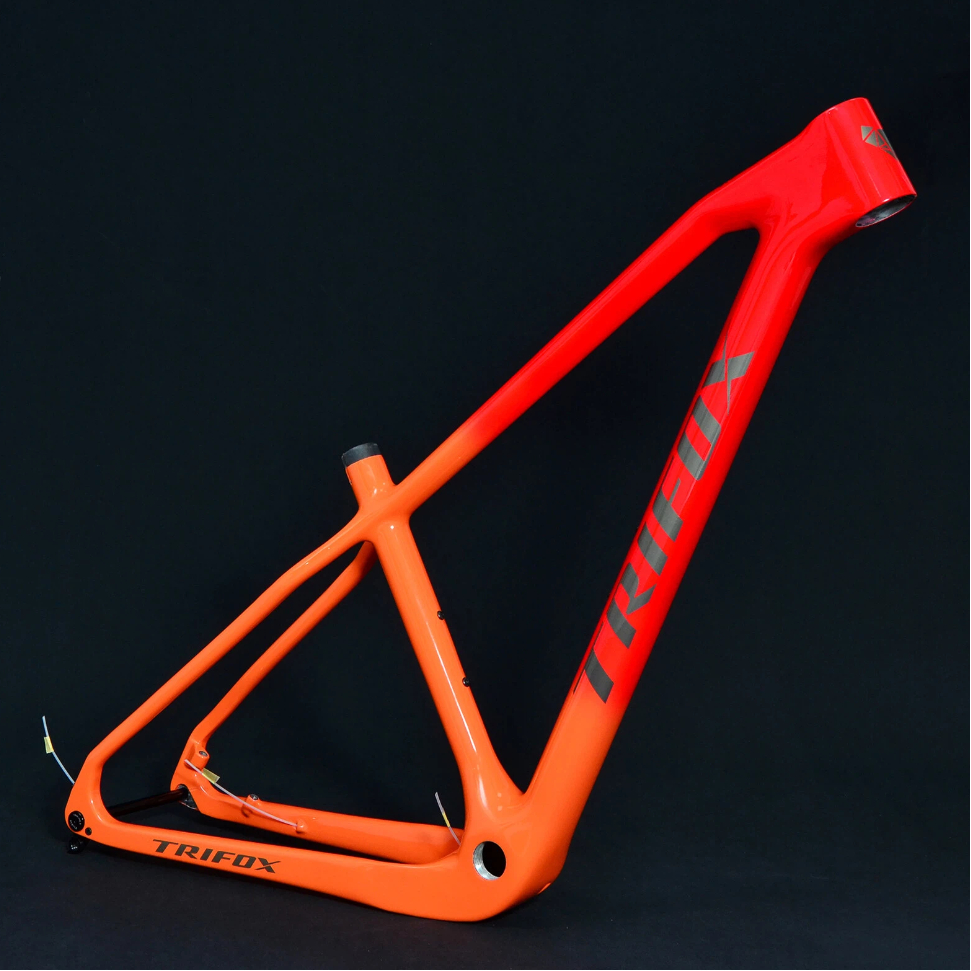
Step 1: The Heart of the Build - Choosing the Right Frame
The frame is the soul of your bike, dictating its geometry, ride quality, and component compatibility. For a dream 29er mountain bike, a carbon hardtail frame is an excellent choice. It offers an ideal blend of lightweight performance, stiffness for efficient power transfer, and inherent vibration damping for better comfort on rough trails. A frame like the Trifox SDY21 features modern standards like Boost spacing for stiffer wheels, a tapered head tube for enhanced steering precision, and internal cable routing for a clean appearance.
Step 2: Selecting the Wheelset and Drivetrain
The wheels are your bike's connection to the trail. For a 29er build, you benefit from superior rollover capability over obstacles, helping to maintain momentum. Pair your frame with a sturdy, yet lightweight, wheelset that matches the Boost hub spacing. For the drivetrain, the modern standard is a 1x (single front chainring) setup. It's simpler, lighter, and eliminates the risk of chain drops. Combine a narrow-wide chainring with a wide-range 12-speed cassette to give you all the gear range you need for any terrain.
Step 3: Dialing in Control with Suspension and Cockpit
Since you're building a hardtail mountain bike, your suspension comes entirely from the fork. A quality air-sprung fork with 120mm-130mm of travel is a versatile choice for most trail riding. Ensure it has a tapered steerer to match your frame's head tube for optimal stiffness. Your cockpit—the handlebar, stem, and seatpost—is your control center. A 35mm diameter handlebar and stem combo offers robust stiffness, while a dropper post is a game-changing upgrade for confident descending on your custom 29er build.
Step 4: Ensuring Stopping Power and Finishing Touches
Modern trails demand powerful brakes. Hydraulic disc brakes are essential, and the frame provides post-mount compatibility for a clean installation. Choose rotor sizes that match your aggression and trail demands. Finally, select the finishing kit: a comfortable saddle, reliable pedals (flat or clipless), and durable tires that suit your typical terrain. These components personalize the bike and complete your MTB project build.
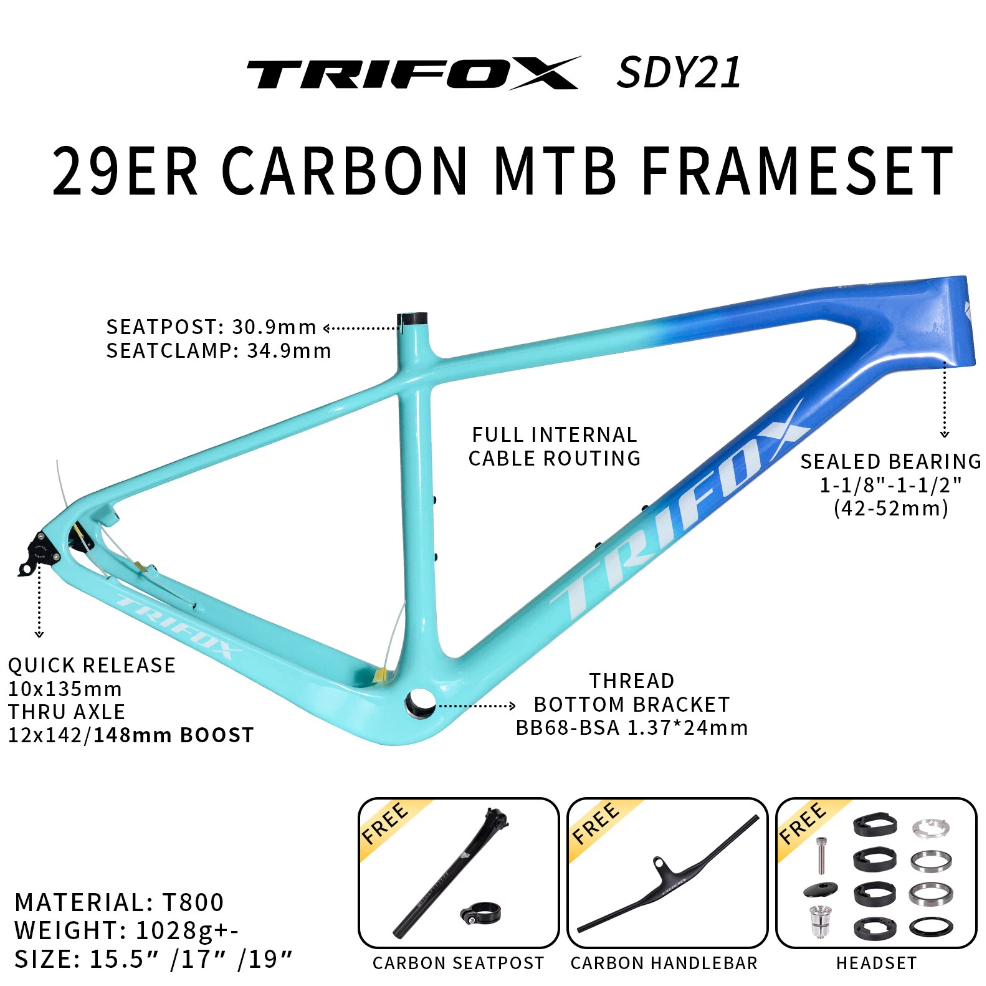
Why the Trifox SDY21 Frame is the Ideal Foundation
Building around a carbon 29er frame like the Trifox SDY21 sets your dream build up for success. Its full carbon fiber construction provides the perfect blend of low weight, vibration damping, and pedaling efficiency. The internal cable routing creates a clean, snag-free appearance and protects the cables from the elements. This frame is designed for the rider who appreciates a direct, engaging trail feel and wants a bike that is both a capable climber and a fun, agile descender.
Your Dream 29er Awaits
Building a bike around a carbon hardtail frame is a deeply personal and satisfying process. You gain an intimate understanding of your machine and create a ride that is uniquely yours. By carefully selecting each component to match this high-quality frame, you will craft a lightweight hardtail mountain bike that is ready to conquer trails and provide endless smiles for years to come. Start your build journey today and experience the ultimate in customization and performance.

Discover the Trifox Trail II Pro full suspension mountain bike frame. This lightweight XC carbon 29er features modern geometry, efficient suspension, and the SRAM Universal Derailleur Hanger (UDH) for a truly future-proof build.
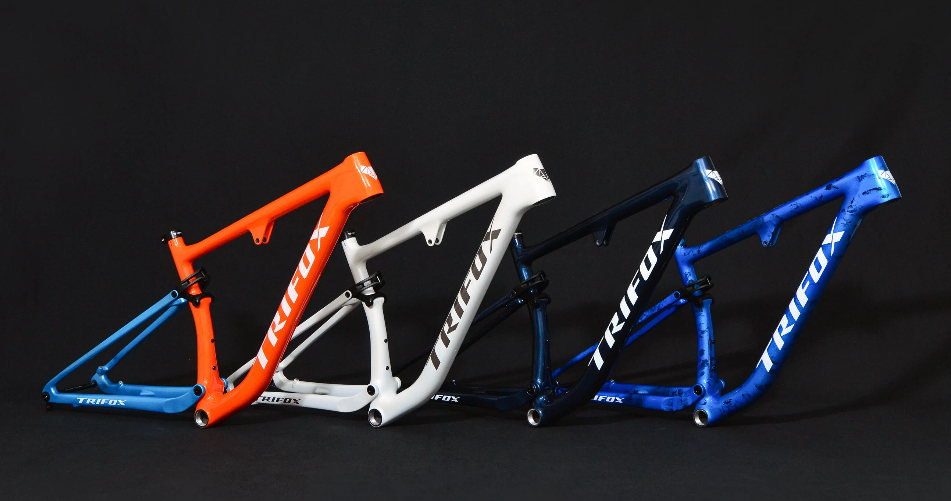
The Evolution of the Trail Slayer
In the relentless pursuit of speed and control, the full-suspension mountain bike stands as the ultimate engineering marvel. It's a machine designed to tame chaos, offering traction and compliance where a hardtail simply can't. But in a rapidly evolving component landscape, how do you ensure your new dream build won't be obsolete in a few years?
The answer lies at the heart of the Trifox Trail II Pro Full Suspension MTB Frame. This isn't just another carbon frame; it's a thoughtfully engineered platform built for the trails of today and the technology of tomorrow. By integrating a high-pivot full suspension design, a lightweight carbon fiber 29er construction, and the industry-standard SRAM Universal Derailleur Hanger (UDH), the Trail II Pro delivers truly future-proof performance.
The Heart of the Beast: XC-Optimized Full Suspension
At the core of the Trail II Pro's capability is its sophisticated full suspension system. Designed with cross-country (XC) and trail riding in mind, it strikes a perfect balance between efficiency and control.
1. Efficient Pedaling Platform: The suspension kinematics are tuned to minimize "bob" when you're putting power down on the climbs or sprinting on flat ground. This means more of your energy is converted into forward motion, not lost to suspension movement.
2. Superior Traction and Control: When the trail points downhill, the frame comes alive. The full suspension system actively keeps the rear wheel in contact with the ground, absorbing bumps and roots to provide unparalleled traction and control. This allows you to carry more speed through rough sections with confidence.
3. Lightweight Carbon Chassis: Crafted from high-modulus carbon fiber, the main frame and swingarm are both incredibly stiff and remarkably light. This reduces the overall weight penalty often associated with full-suspension bikes, resulting in a lively, responsive ride that feels agile on climbs and precise on descents.

The Geometry of Confidence: 29er Wheels Meets Modern Design
The Trail II Pro is built around 29-inch wheels, leveraging their legendary roll-over ability and momentum-carrying prowess. The frame's geometry is meticulously crafted to harness these benefits:
1.Stability at Speed: A moderately slack head angle and longer wheelbase provide a confident, stable feel when descending, instilling confidence when the terrain gets steep and technical.
2. Agile Climbing: Despite its stability, the chainstay length and seat tube angle are optimized to keep the front wheel planted and the rider centered during steep climbs, preventing the bike from feeling sluggish.
3. Boost Spacing: The frame features 148x12mm Boost rear spacing, which increases wheel stiffness and improves tire clearance, allowing for wider, more aggressive rubber—a must for modern trail riding.
The Future-Proof Upgrade: Why the UDH is a Game-Changer
While the suspension and carbon frame are the stars of the show, the inclusion of the SRAM Universal Derailleur Hanger (UDH) is what makes the Trail II Pro a genuinely smart long-term investment.
Universal Compatibility for Ultimate Flexibility: The UDH is an industry-adopted standard. This means it's designed to work seamlessly with a vast range of derailleurs, most critically, SRAM's current and future Eagle Transmission (AXS) groupsets. Whether you're building with a mechanical groupset today or planning to upgrade to wireless shifting tomorrow, the Trail II Pro is ready. No more worrying about sourcing a rare, proprietary hanger.
Built-in Crash Protection: Mountain biking is tough on equipment. The UDH is engineered to be the weakest link in the drivetrain. In a crash or impact, the inexpensive hanger is designed to break before your expensive derailleur or frame does. This simple, intelligent design can save you from costly repairs and downtime.
Simplifying Your Life: The standardization of the UDH means replacement hangers are widely available from numerous brands and retailers. You can ride with peace of mind, knowing that a replacement is just a click or a short trip to the local bike shop away.
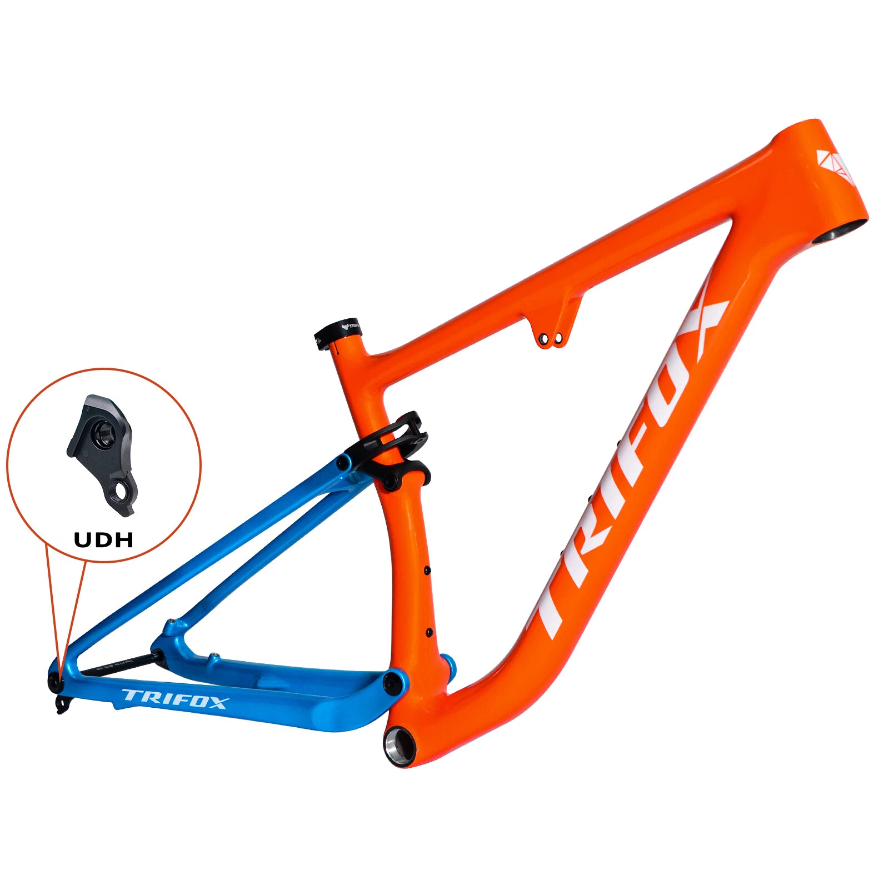
Who Is The Trifox Trail II Pro Frame For?
This frame is the perfect foundation for:
The Discerning XC/Trail Rider: Wants the efficiency of a carbon frame with the control of full suspension to tackle a wide variety of terrain.
The Tech-Forward Builder: Plans a custom build and demands a frame that is compatible with the latest components, including wireless drivetrains.
The Upgrader: Moving from an older, heavier, or outdated full-suspension bike and seeking a modern, lightweight platform with contemporary standards.
The One-Bike Quiver Builder: Looking for a single frame that can be built up to be a capable race machine one day and a rugged trail explorer the next.
Build Your Next Adventure on a Foundation That Lasts
The Trifox Trail II Pro Full Suspension MTB Frame is more than just a collection of carbon and bearings. It's a holistic approach to modern mountain bike design. It delivers the exhilarating performance of a lightweight carbon 29er with the composed confidence of a tuned full suspension system, all while being secured for the future with the UDH.
It’s a frame that empowers you to build the bike you want today, with the confidence that it will remain compatible and relevant for years to come. Don't just build a new bike; build a lasting partnership with the trail.
Ready to experience future-proof performance? Explore the Trifox Trail II Pro Full Suspension Frame and start planning your ultimate build today.

Discover the Trifox SDY20 carbon MTB frame. This lightweight 29er hardtail frame combines a stiff, efficient carbon layup with the modern SRAM Universal Derailleur Hanger (UDH) for unparalleled performance and compatibility. Perfect for XC and trail riders.
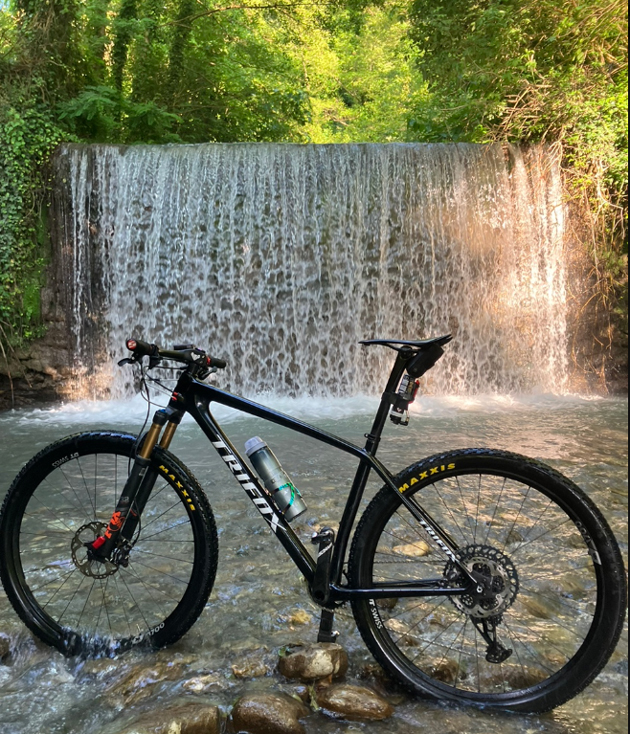
The Quest for the Perfect Hardtail
In the world of mountain biking, the hardtail holds a special place. It’s a pure, direct connection between rider and trail, rewarding skill and fitness with unmatched efficiency. But not all hardtails are created equal. The modern rider demands a frame that is not only stiff and lightweight but also future-proof, ready to accept the latest components without compromise.
Enter the Trifox SDY20 Carbon MTB Hardtail Frame. This frame is engineered from the ground up to meet these exact demands. By fusing a high-performance carbon fiber 29er design with the game-changing SRAM Universal Derailleur Hanger (UDH), the SDY20 isn't just another frame—it's a smart, long-term investment for discerning riders.
A Deep Dive into the SDY20's Carbon ChassisAt the heart of any great frame is its material and construction. The SDY20 is meticulously crafted from unidirectional carbon fiber, a process that places each strand of carbon in a specific direction to optimize strength and stiffness where it's needed most.
Unmatched Stiffness: The primary benefit of this advanced carbon layup is phenomenal power transfer. When you put power into the pedals, the SDY20 translates it directly into forward motion with minimal flex. This results in explosive acceleration and climbing efficiency that will make you feel stronger on every ride.
Feather-Light Weight: Carbon fiber's incredible strength-to-weight ratio means the SDY20 frame is remarkably light. Shedding weight from the frame, the largest single component of your bike, has a dramatic effect on overall ride feel, making the bike more agile and easier to handle, especially on technical climbs..
29er Performance: The frame is designed exclusively for 29-inch wheels, the current gold standard for mountain biking. Larger wheels roll over obstacles with greater ease, maintain momentum better, and provide increased traction and confidence through rough sections. The SDY20’s geometry is optimized to harness all the benefits of the 29er platform.
The Game-Changing Upgrade: Why the UDH MattersThis is where the Trifox SDY20 truly separates itself from the pack. The inclusion of the SRAM Universal Derailleur Hanger (UDH) is more than a minor spec update; it's a fundamental shift in compatibility and durability.
Universal Compatibility: As the name suggests, the UDH is an industry-standard hanger. It’s designed to work with an enormous range of derailleurs, most notably SRAM's current and future Eagle Transmission (AXS) groupsets. This means your SDY20 frame is ready for the latest wireless shifting technology right out of the box. No more searching for proprietary, model-specific hangers.
Enhanced Durability & Protection: The UDH is designed to be a sacrificial component. In the event of an impact to your rear derailleur, the UDH is engineered to break before the much more expensive derailleur or frame does. This simple, smart design can save you hundreds of dollars in repairs and is a critical feature for any mountain bike that sees real trail use.
Future-Proofing Your Investment: By building your bike around a frame with a UDH, you are ensuring that it will be compatible with the vast majority of drivetrain upgrades for years to come. The UDH is quickly becoming the new norm, and the SDY20 puts you on the right side of that evolution.:
Built for Modern Standards: More Than Just UDHThe forward-thinking design of the SDY20 extends beyond the derailleur hanger. This frame is built to accommodate the best modern components.
Boost Spacing (148x12mm Thru-Axle): Boost hub spacing increases wheel stiffness and strength, providing better alignment for wider tires and improving handling precision.
Modern Geometry: The frame features a contemporary geometry that strikes a perfect balance for XC and trail riding. It provides a confident, stable stance on descents while remaining agile and responsive for climbing and technical maneuvers.
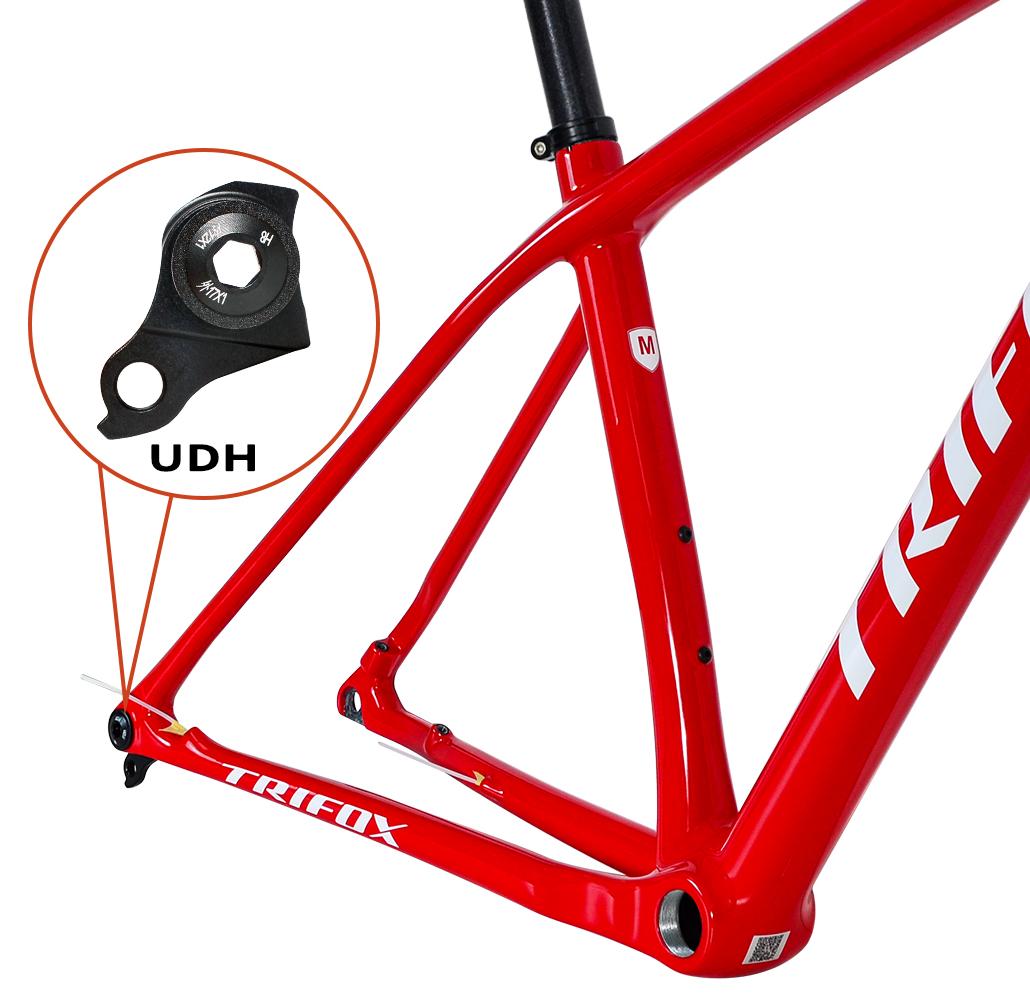
Who Is The Trifox SDY20 Carbon Frame For?
This frame is the ideal foundation for:
The Weight-Conscious Racer: Looking for every possible advantage in stiffness and weight savings.
The Trail Enthusiast: Wants a lively, efficient, and modern hardtail that can tackle a variety of terrain with confidence.
The Tech-Savvy Builder: Planning a custom build and wants a frame that is compatible with the latest and greatest components, including wireless groupsets.
The Upgrader: Seeking to move from an older aluminum frame to a high-performance carbon platform without sacrificing future compatibility.
A Frame Ready for Tomorrow's TrailsThe Trifox SDY20 Carbon MTB Hardtail Frame is a masterclass in modern bicycle design. It doesn't force you to choose between a stiff, lightweight carbon chassis and future-proof compatibility. It delivers both in one elegant package.
By combining the race-winning performance of its 29er carbon frame with the industry-standard SRAM UDH upgrade, the SDY20 offers a compelling value proposition. It’s a frame that feels incredible to ride today and is smartly equipped for the innovations of tomorrow.
Ready to build your dream hardtail? Explore the Trifox SDY20 Carbon Frame and discover the perfect balance of weight, stiffness, and modern technology.

Embarking on the journey to build your dream cross-country (XC) mountain bike is an exciting endeavor. At the heart of this project lies the most critical decision: selecting the perfect frame. A 29er XC full suspension carbon frame represents the ultimate fusion of speed, efficiency, and control, designed to conquer demanding trails while remaining lightweight and responsive.
But with a myriad of options available, how do you ensure you're making the right choice? This comprehensive guide will walk you through the essential factors to consider, using the exemplary TRIFOX Trail II Pro Full Suspension Carbon MTB Frame as a benchmark for what a top-tier frame should offer.
1. Geometry: The Blueprint of Performance
The geometry of a frame is the DNA of your bike's handling characteristics. For modern XC and downcountry riding, the goal is a blend of aggressive climbing efficiency and confident descending stability.
Head Tube Angle (HTA): A slacker HTA boosts stability on technical descents. The TRIFOX Trail II Pro features a 67.5-degree head angle, which is progressive for an XC frame, providing increased confidence when the trail turns downward.
Seat Tube Angle (STA): A steeper STA positions the rider optimally over the bottom bracket, enhancing climbing efficiency and power transfer. The Trail II Pro's 75.5-degree seat angle ensures you can tackle steep climbs effectively.
Reach and Stack: These measurements define your cockpit space and riding posture. Modern geometries tend toward longer reach and lower stack for improved stability and a more aerodynamic riding position.
Why it matters: The right geometry ensures the bike feels intuitive and responsive. The Trail II Pro's geometry strikes a perfect balance, making it adept at both winning races and tackling technical trail features.
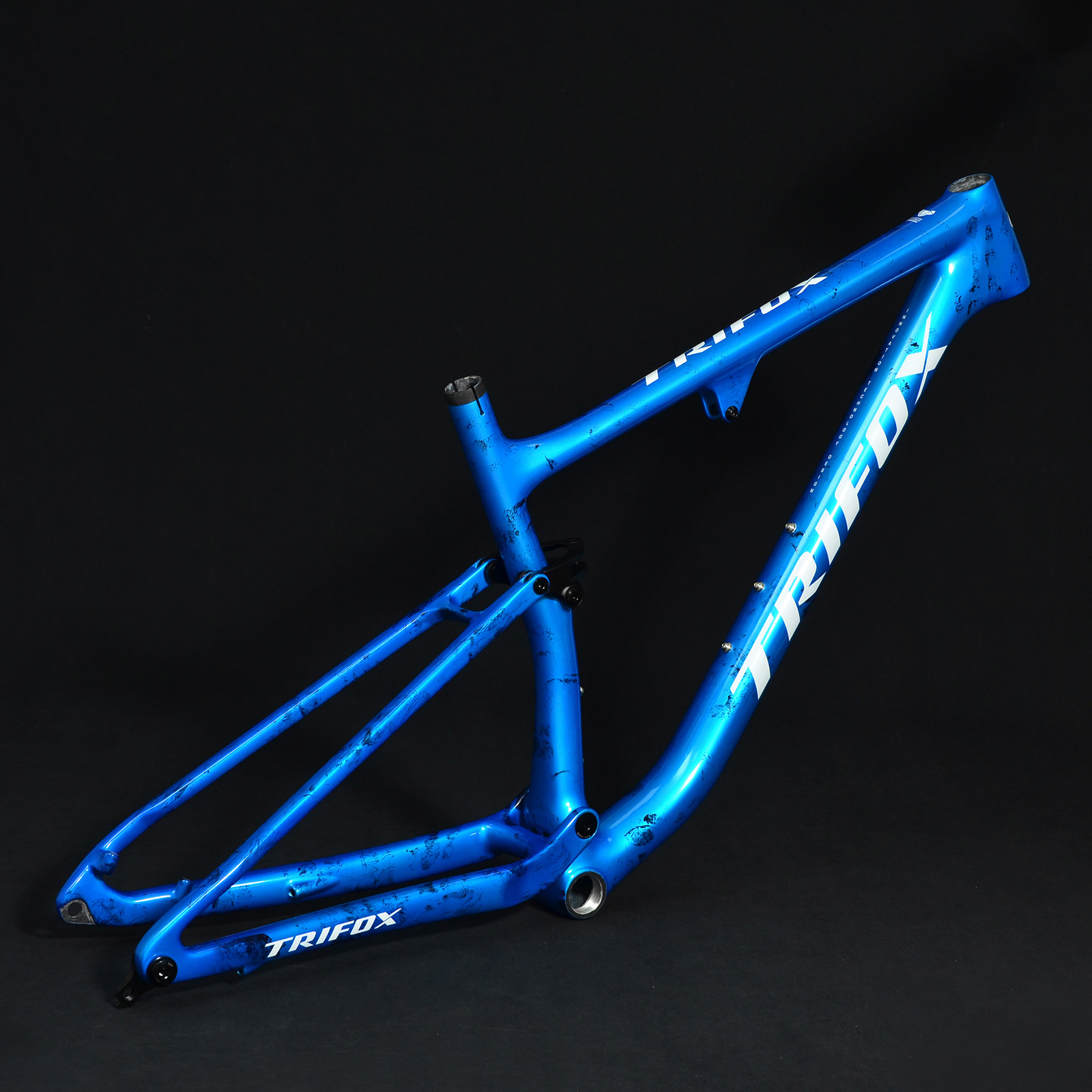
2. Suspension Design: The Heart of the Ride
A full-suspension XC bike must offer traction and comfort without compromising pedaling efficiency. The design of the suspension linkage is paramount.
Linkage Type: The TRIFOX Trail II Pro employs a highly efficient four-bar suspension system. This design is renowned for its ability to minimize pedal bob, ensuring that your energy is directed into forward momentum rather than being absorbed by the suspension.
Travel: For XC purposes, 35-45mm of rear travel is the gold standard. It provides sufficient absorption for rough terrain and maintains grip without sacrificing the snappy, efficient feel essential for climbing and acceleration. The Trail II Pro is designed around this ideal 35-45mm of travel.
Anti-Squat and Kinematics: Advanced suspension kinematics with high anti-squat values keep the frame taut under power, translating to efficient pedaling—a non-negotiable trait for any serious XC frame.
3. Carbon Fiber Quality: Where Engineering Meets Art
The grade and construction of the carbon fiber directly influence weight, stiffness, compliance, and overall durability.
Carbon Grade: Look for frames utilizing high-modulus carbon fibers. The TRIFOX Trail II Pro is crafted from T800 carbon fiber, a premium material that allows for an exceptional strength-to-weight ratio. This results in a frame that is both incredibly light and impressively robust.
Layup Process: The artistry of carbon frame building lies in the layup. Precision hand-laying allows engineers to tailor the flexibility and stiffness in specific areas. The down tube and bottom bracket can be reinforced for stiffness and power transfer, while the seat stays can be designed to offer vertical compliance, smoothing out trail vibrations.
Why it matters: A high-quality carbon frame like the Trail II Pro delivers a ride quality that is stiff and responsive when you stamp on the pedals yet surprisingly comfortable over long, rugged distances.
4. Modern Features and Compatibility: Future-Proofing Your Investment
A modern frame must adhere to current component standards to ensure compatibility and ease of upgrades.
Dropper Post Compatibility: The ability to run a dropper post is essential for modern trail riding. The Trail II Pro features internal routing for a 30.9mm dropper post, allowing for a clean setup and confident descending.
Boost Spacing: The frame boasts 148x12mm Boost rear spacing and 110x15mm front spacing. This standard increases wheel stiffness, improves tire clearance, and enhances overall handling precision.
Threaded Bottom Bracket: A BSA threaded bottom bracket is a signature feature of a well-thought-out frame. It is renowned for its reliability, ease of maintenance, and resistance to creaking—a common issue with press-fit systems.
Internal Cable Routing: Full internal routing for derailleur and dropper posts not only creates a sleek, aesthetic look but also protects the cables from dirt and damage.
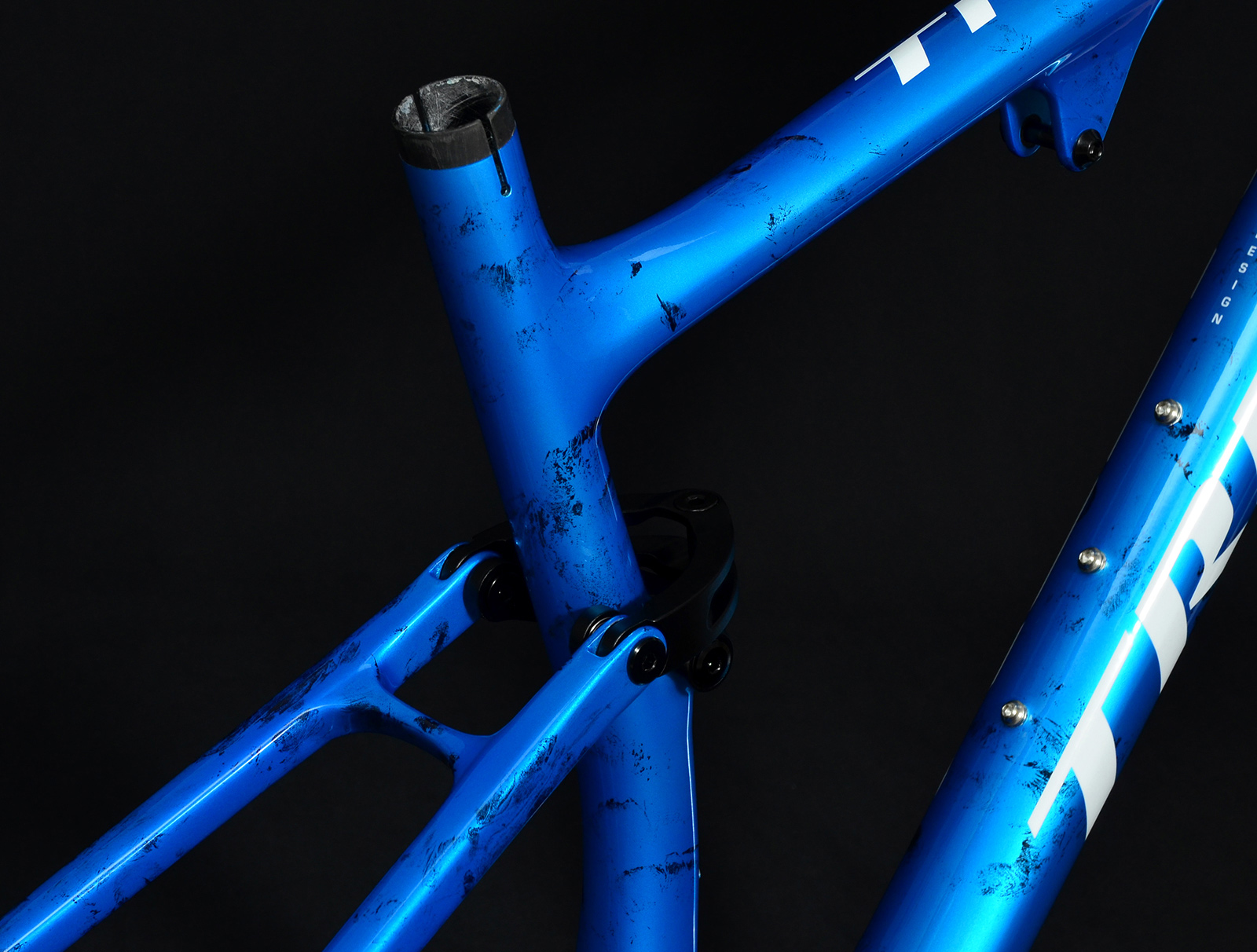
5. Weight and Value Proposition
The pursuit of lightness is central to XC. The TRIFOX Trail II Pro frame weighs approximately 1272g-1336g, placing it firmly in the competitive range for high-performance carbon frames. When evaluating price, consider the value offered by direct-to-consumer brands like TRIFOX, which provide cutting-edge technology and materials at a fraction of the cost of many major brands.
Conclusion: The TRIFOX Trail II Pro – A Paradigm of Intelligent DesignSelecting the perfect frame is a process of matching your riding ambitions with engineering excellence. By focusing on geometry, suspension design, carbon quality, and modern features, you can make an informed decision that will define your ride for years to come.
The TRIFOX Trail II Pro 29er XC Full Suspension Carbon Frame emerges as a standout option that exemplifies these principles:
Its modern geometry inspires confidence across diverse terrain.
The efficient four-bar suspension delivers traction without compromise.
The T800 carbon construction offers a sublime blend of lightness and strength.
Its future-proof features ensure compatibility with the best components on the market.
By using this guide and the Trail II Pro as a reference, you are equipped to choose a frame that will form the foundation of an exceptional mountain bike, ready to push the limits of speed and performance.
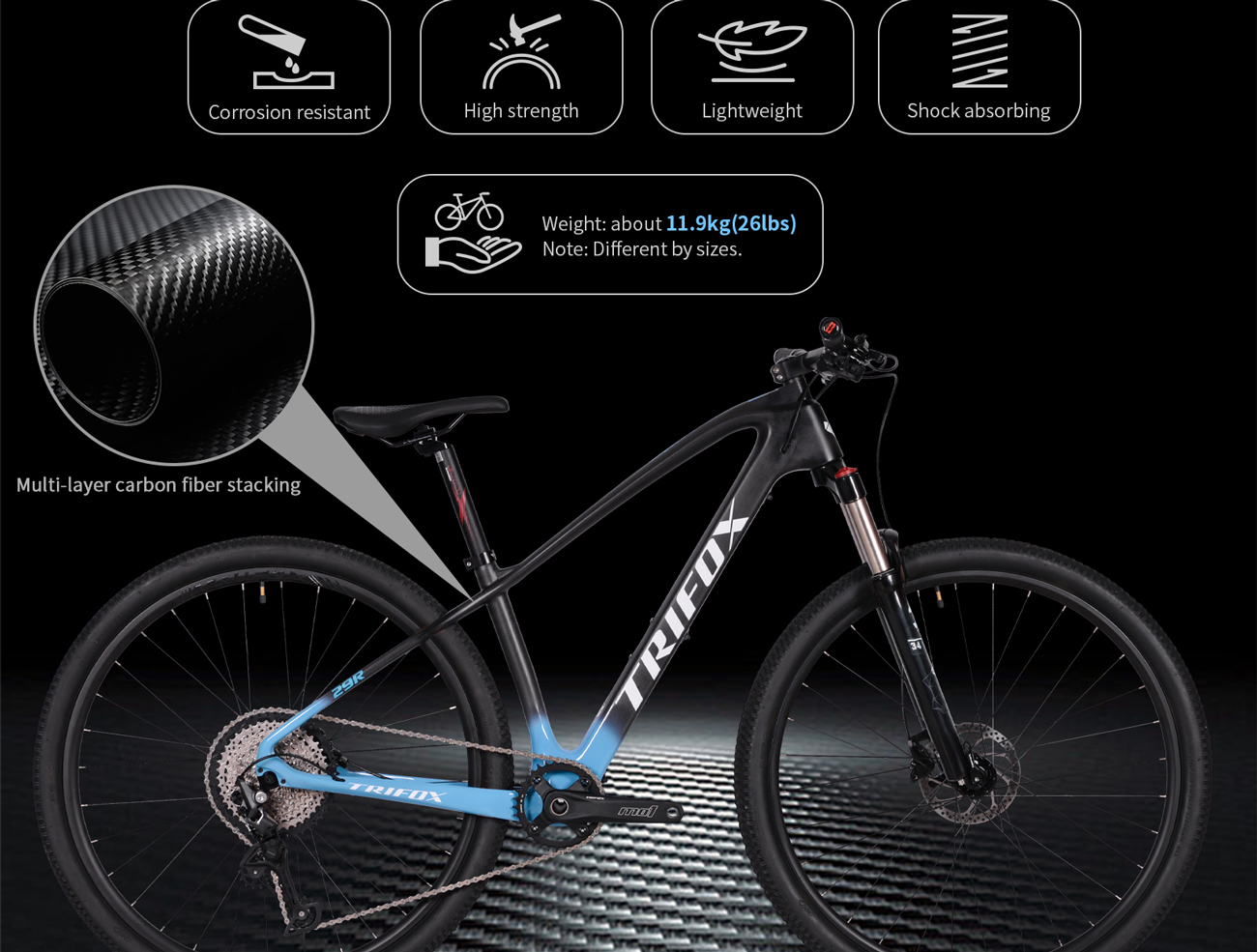
Think building a capable, lightweight hardtail requires breaking the bank? Think again. The sub-$250 frame market is hotter than ever, offering surprising performance for riders seeking value without sacrificing fun. We scrutinized options, and one standout shines: the Trifox MFM200 Carbon Hardtail Frame. Here’s why it’s a budget hero:
The Carbon Game-Changer (Yes, at $227!)
The MFM200 shatters expectations by delivering a full carbon fiber frame at an astonishing price point. Forget heavy steel or flexy aluminum – this frame offers the core benefits of carbon:
Ultralight Build: Weighing in around 1200g (size dependent), it sheds serious pounds compared to alloy frames at this price. That translates directly to easier climbing and a livelier, more responsive feel on every trail.
Stiffness for Speed: Carbon construction ensures excellent pedaling efficiency. Power transfer is direct, minimizing wasted energy when you stomp on the pedals, whether sprinting or grinding uphill.
Tuned Trail Compliance: While stiff laterally, carbon can offer subtle vertical flex. The MFM200’s design helps absorb smaller bumps and chatter, reducing fatigue on longer rides and rough sections, making it more capable than its price suggests.
Modern Geometry for Real Trails
Trifox didn't skimp on contemporary design:
Slack Head Tube Angle (~66-67°): Boosts confidence on descents, improving stability when things get steep or rough.
Steep Seat Tube Angle (~74-75°): Positions you efficiently over the pedals for better climbing traction and comfort.
Reach & Wheelbase: Balanced numbers provide a stable yet maneuverable ride suitable for aggressive trail riding and XC adventures.
Smart Build Compatibility
The MFM200 plays nice with widely available, affordable components:
Boost Hub Spacing (148x12mm rear): Ensures stiffness and compatibility with modern wheelsets.
Internal Cable Routing: Clean looks and protection for dropper posts and derailleurs.
Tapered Headtube: Fits modern, stiff forks for precise steering.
Threaded Bottom Bracket: A huge win for reliability and ease of maintenance – no creaky press-fits!
Value Verdict: The Trifox MFM200
Finding a new carbon frame under $230 feels almost unreal. The Trifox MFM200 delivers the core advantages of carbon – significant weight savings, efficient power transfer, and surprisingly good trail manners – wrapped in modern, capable geometry. While you might find minor finish differences compared to premium frames, the fundamental performance is undeniable.
Is it perfect? Consider:
Finish: Expect functional over flawless – cosmetics might be simpler.
Hardware: Bearings and bolts are adequate, but upgrading later is easy.
Build Cost: Remember, the frame is just the start! Factor in fork, drivetrain, wheels, etc.
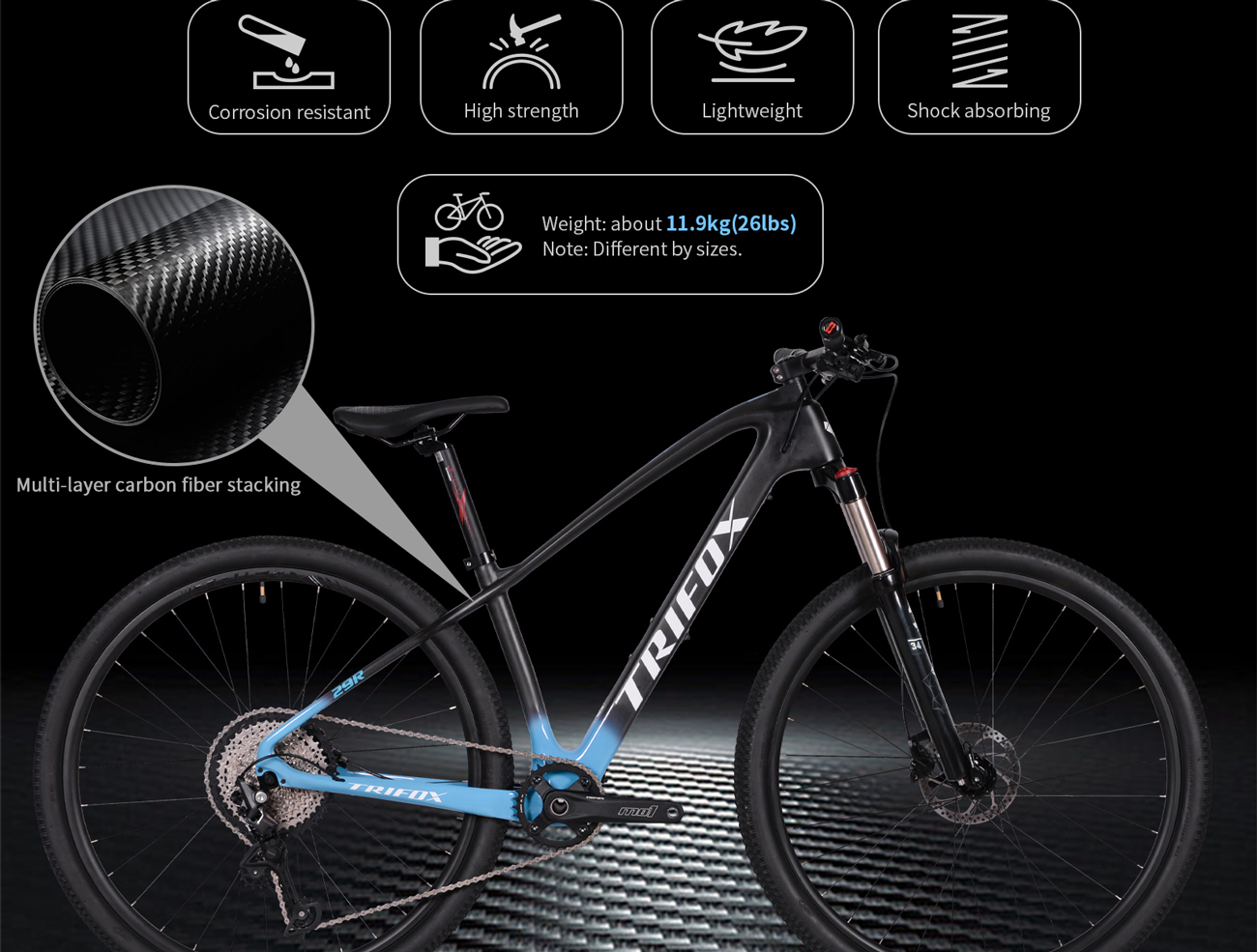
The Bottom Line:
For riders demanding a lightweight, efficient, and modern hardtail platform without blowing the budget, the Trifox MFM200 is a revelation. It proves you don't need $1000+ to get a frame that unlocks hardtail heroics. Pair it with smart component choices, and you’ve got a trail-taming machine that punches way above its weight class. Budget hardtails just leveled up!
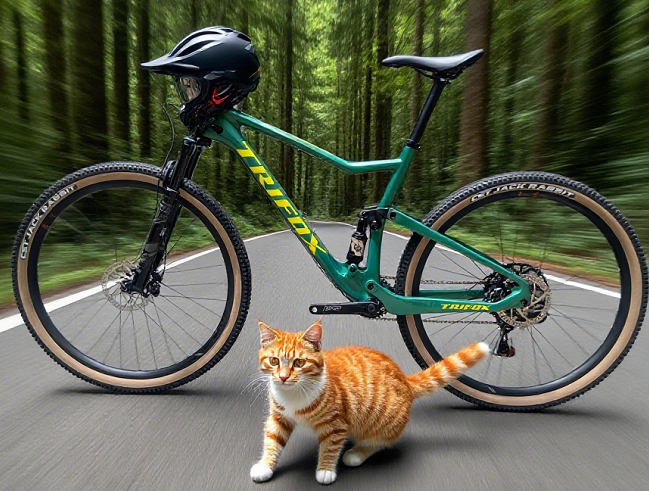
Remember when carbon fiber was reserved for pro pelotons and deep-pocketed racers? Not anymore. Mountain biking is witnessing the unstoppable rise of carbon, transforming trails from XC loops to gnarly enduro descents. Brands like Trifox are making this once-exotic material accessible, proving carbon MTBs aren't just lighter – they're better riding machines. Here's why the shift is seismic:
Featherweight Flight: This is the headline. Carbon frames slash pounds off alloy counterparts. Less weight means easier climbing, quicker acceleration, and less fatigue over long days. You carry the bike less; the bike carries you more. Trifox's carbon hardtails and full-suspension rigs exemplify this advantage, turning arduous ascents into achievable efforts.
Stiffness Meets Sensation: Carbon isn't just light; it's incredibly tuneable. Engineers craft frames with targeted stiffness where it matters most: the bottom bracket for efficient pedaling, the head tube for precise steering. Yet, carbon's magic lies in its ability to also offer vertical compliance. It absorbs smaller trail chatter better than alloy, reducing arm and leg fatigue, letting you ride harder, longer.
Strength You Can Trust: Forget the "fragile" myth. Modern carbon layups create structures incredibly resistant to impacts and fatigue. When designed correctly (like Trifox's robust mountain frames), carbon handles rock strikes, drops, and rough terrain with impressive resilience. It won't dent like aluminum and shrugs off corrosion.
Ride Refined: The combination of lightness, stiffness, and subtle flex translates to a more connected, responsive, and lively feel. You feel the trail without being beaten by it. Carbon bikes track better through corners, feel more nimble in the air, and offer a directness that boosts confidence when pushing limits.
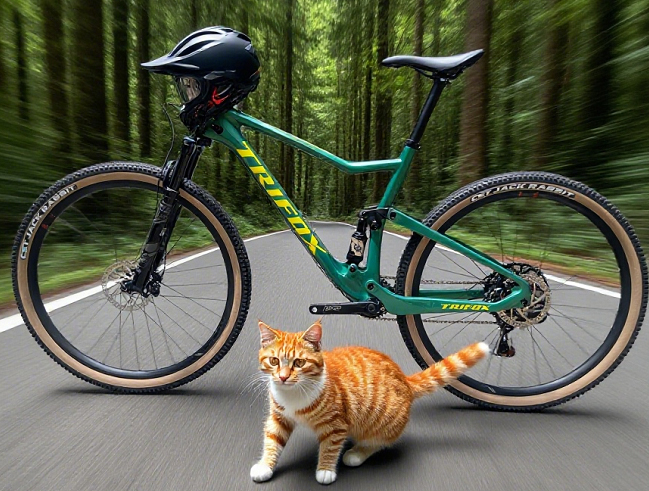
Trifox: Bringing Carbon to the Trail
Brands like Trifox are crucial to this rise. By leveraging efficient manufacturing and direct-to-consumer models, they deliver high-performance carbon mountain bikes at astonishingly competitive prices. Whether it's their agile carbon hardtails perfect for XC and trail blasting, or their capable full-suspension platforms, Trifox proves you don't need a pro contract to experience the carbon revolution.
The Verdict: Not Just a Trend, The Future
The rise of carbon fiber in mountain biking isn't just hype; it's a fundamental shift driven by tangible performance benefits. It offers a superior blend of weight, strength, stiffness, and ride quality that alloy struggles to match. As manufacturing advances and brands like Trifox make it more accessible, carbon is becoming the material of choice for riders seeking every advantage on the trail. It’s not about replacing alloy entirely, but about offering a compelling, high-performance option that’s redefining what’s possible on two wheels. Ready to feel the difference? Explore the carbon evolution: Discover Trifox Mountain Bikes.


























































